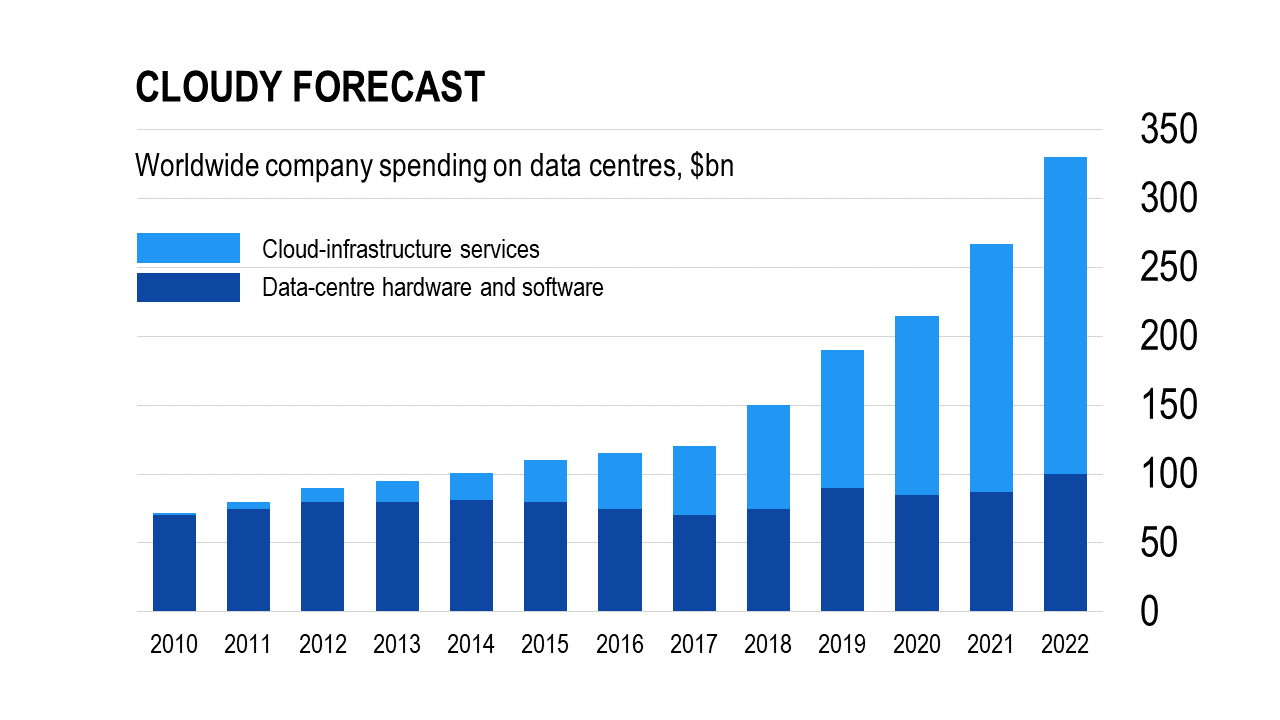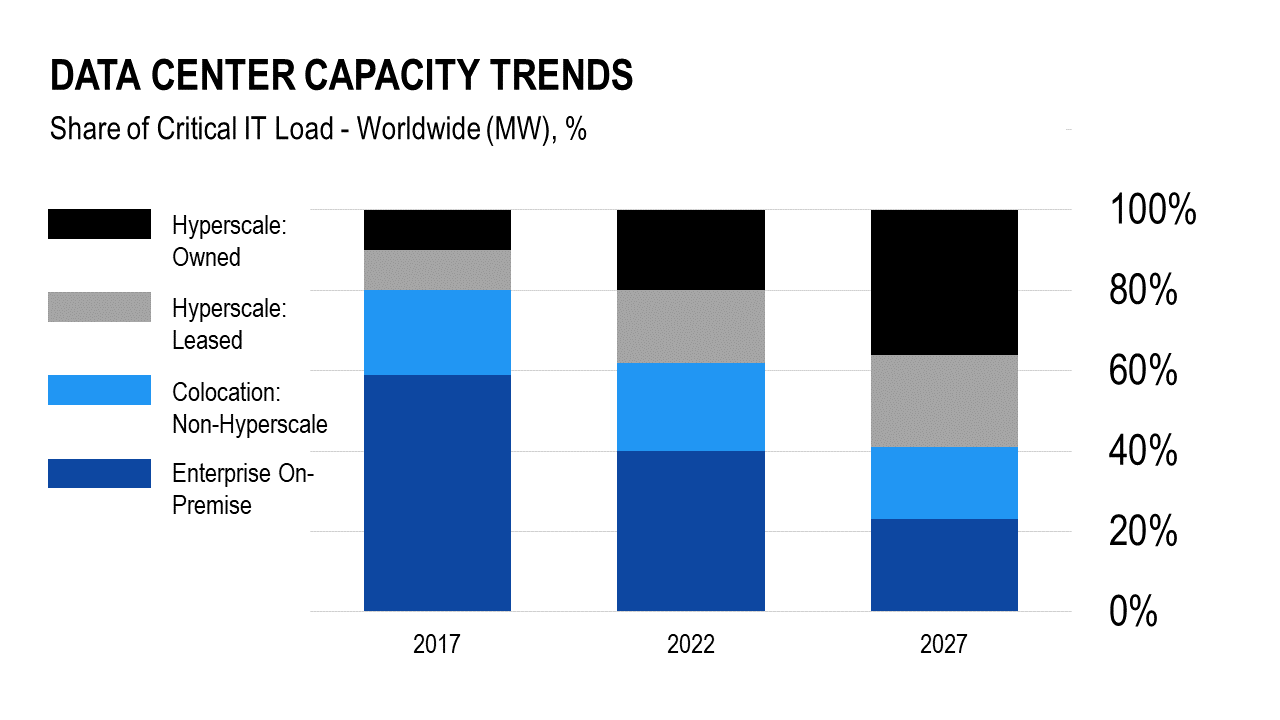Cloud vs On-premises: What is Better for Business?
Why is on-premises still popular? The answer is that it definitely gives more control over your data, and in some cases is still more reliable and cost-effective.
One may say that discussion on the topic of cloud vs on-premise is over – the cloud approach is definitely winning, but for many professionals this is not yet the case. There are of course many arguments that cloud brings a lot of value but having data on-premise is a valid option for many businesses.
Table of contents
Why is on-premises still popular?
First, let us remind ourselves of the main differences between “cloud” and “on-premise”? If briefly, it is the answer to the question “Where is your data?” If you own servers and software and manage them, then it is on-premise. If other guys are doing it, then it is cloud. The cloud is far from being a new thing on the market. It started in 2006 when Amazon first introduced its Elastic Computer Cloud (EC2) solution.
Today cloud technologies are booming. The market for such solutions is demonstrating double-digit growth everywhere, be it the US, EMEA or Asia. Global business now spends around $230 billion dollars on public (managed by an external company) cloud service.This is $40 billion more than in 2019 when it was around $190 billion. The Big 3 top cloud providers (Amazon, Google, and Microsoft) feel confident that this rise will continue. So far, all of them have enjoyed a more than 30% growth in revenue.
Despite the success of the cloud, some experts say that it is too early to talk about the decline of on-premises. Companies, big and small, continue to keep their data in their own hands. However, while the percentage of on-premises solutions is decreasing in numerical terms, they are not experiencing a decline.

There will definitely still be some space for these types of solutions in the modern world. Synergy Research Group, a US market intelligence and analytics group, predicts that in 2027, on-premises solutions will still have a sizable share of the market.

Why do companies still keep data on-premise?
So, what is the reason behind a business’s decision to have and run its own hardware and software? Why is the cloud vs on-premise data center debate still on the table for companies and organizations? Many businesses migrate some of their data to the cloud but find it cost-prohibitive or too resource-intensive to move all the way. As a result, some processes, business logic, and data storage still take place on-premise infrastructure. There are a few explanations why this may be happening:
- Data is really sensitive. One of IBA’s clients, a top US manufacturing company, has successfully moved all its electronic correspondence to the cloud but still keeps financial and corporate business processes under total control on its own servers. The software it uses seems outdated but the company is happy to have it this way.
- IoT as the next “big thing”. It is especially important for big manufacturing, transport and other companies, which are planning to heavily use the “Internet of things”. At the moment the amount of data being generated by various micro devices is in its birth stage, but within a couple of years there will be an explosion. In order to catch up, companies will need to build data centers right near their manufacturing facilities. Milliseconds of delay in data transfer really matters in this case.
- Government requirements. This is one of the most common reasons data remains on –premises. Especially, if we are talking about financial institutions, health service providers or government bodies. Legal requirements, which are getting stricter in many countries, openly prohibit keeping data abroad and/or in unauthorized data centers. This means customers must invest a lot in their own facilities.
- Technical issues. Migration to the cloud is not an easy task. Vendors sometimes provide too optimistic a picture regarding how quickly and effortlessly data can be moved and processes created in the cloud, but in reality, this is real work that requires skills and knowledge.
There are undoubtedly other reasons. The decision about cloud vs on-premise data center location is not that easy. Each case is unique but, generally, on-premises is a good choice when a business needs 100% control over its data and has the necessary capabilities to manage it.

Think about cost
But, of course, in most cases, price is a key issue. A cloud vs on-premise cost estimation is essential for any business. Keeping expenditures within a budget is a first requirement from the company’s financial controllers. Those who are in charge of money are often quite distant from technological discussions and the only way to impress them is to prove that all the money is well spent. In this case, the best argument could be related to costs and type of costs. Normally, there is CAPEX (CAPital EXpenses) versus OPEX (OPerational EXpenses) decisions about pure money, but good advice here not to forget additional factors such getting news skills, finding qualified resources on the market and other things which also cost money but are difficult to predict and estimate. In general, cloud vs on-premise cost comparison needs involvement from both business and IT specialists.
Hybrid and multi cloud to the rescue
Bearing in mind that the discussion of which is better, external cloud or your own servers, often leads to a predictable outcome for many businesses – give me both. A discussion on cloud vs on-premise data center turns into a cloud and on-premise decision. Each side finally agrees that for some types of data the cloud is good and for others the best choice would be keeping it on-premise. So the concept, called hybrid cloud, is promoted as a solution.
A hybrid cloud combines public cloud computing and, if it exists, a private cloud (which is, essentially, still the cloud) with on-premise infrastructure. On-premise infrastructure here can be an internal data center or any other IT infrastructure (ERP, CRM, accounting systems, you name it) that runs within a corporate network.
Hybrid cloud deployments are now common. This looks good but combining solutions for single control using various tools from different vendors takes a lot of time and effort. So, make sure that business have enough resources to cope with any possible difficulties.
For those who would like to avoid the risks of being tied to a single provider there is a concept called multicloud. It allows clients to optimize costs and use solutions from different cloud providers at the same time. Though it might be difficult from a technical point of view to manage a lot of accounts, undoubtedly, it gives businesses the necessary flexibility for data management.
Conclusion
The market for cloud services is definitely growing fast. They have become mature and offer new services such as various AI and ML solutions. Despite this, on-premises solutions, though not expanding rapidly, are managing to keep their place as part of corporate IT strategy. It’s premature to conclude that maintaining your own servers and having in-house IT administrators is an imprudent business choice.. In some cases, they work much better than external providers do. So, the arguments regarding cloud vs on-premise are far from settled. In order to conduct a cloud vs on-premise comparison properly, an individual needs to take into consideration various points. Talk to your users about their needs, analyze your IT environment, develop a reasonable cloud migration strategy, check your pockets with your accountants and CFO and then decide – cloud or on-premise.
YOU MAY ALSO BE INTERESTED IN
- Data Migration to Cloud: What You Will Get in the End
- Why Migrating to the Cloud Brings Value
- ETL/ELT: What They Are, Why They Matter, and When to Use Standalone ETL/ELT Tools
- Data Literacy: The ABCs of Business Intelligence
- BI Tools Comparison: How to Decide Which Business Intelligence Tool is Right for You
- Unsuccessful examples of BI development. Part I
- Examples of Unsuccessful BI Development. Part II
- BI Implementation Plan
- IBA Group Tableau Special Courses
- Integrating Power BI into E-Commerce: How to Succeed in Rapidly Developing Markets
- Analytics vs. Reporting — Is There a Difference?
- Better Business Intelligence: Bringing Data-Driven Insights to Everyone with IBM Cognos Analytics 11